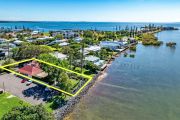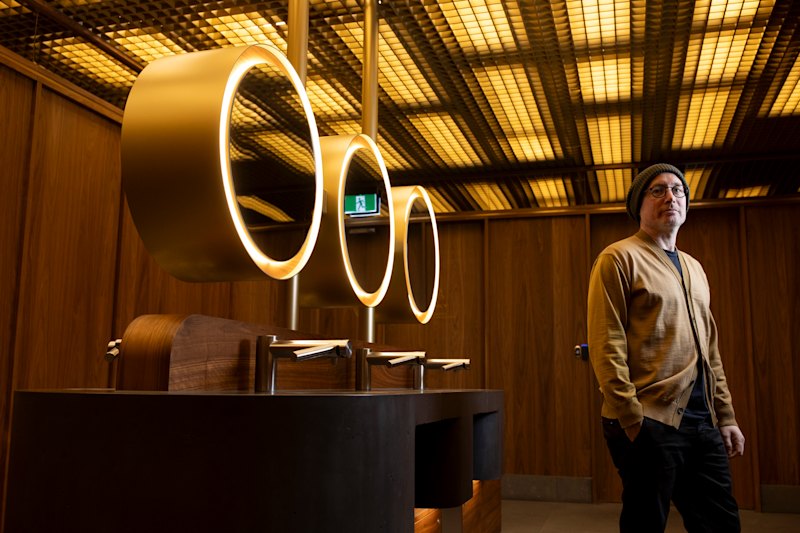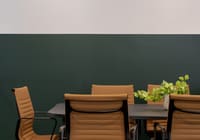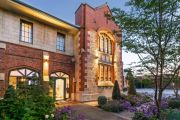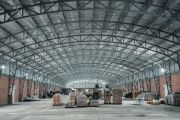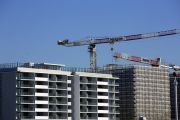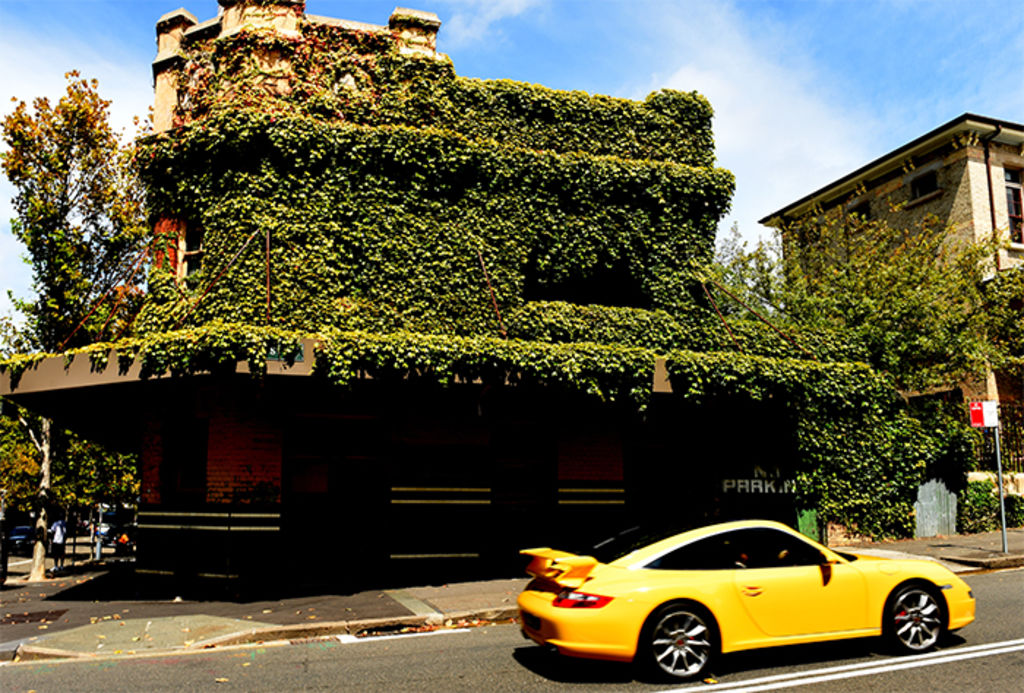
First look inside the Terminus Hotel time capsule
In the three decades since it called last drinks, the Terminus Hotel has become one of Sydney’s favourite abandoned buildings.
The Pyrmont pub has been boarded up since it closed in 1984, with curiosity about the Harris Street building growing steadily over the years – much like the masses of ivy covering its facade.
 Ivy covers the outside of the Terminus Hotel in Pyrmont. Photo: Steven Siewert
Ivy covers the outside of the Terminus Hotel in Pyrmont. Photo: Steven Siewert
News this week that the hotel is on the market has sparked new interest in what lies behind the sealed windows and doors, as well as community concern for the future of the 101-year-old heritage-listed building.
On Thursday, Fairfax Media was allowed special access to explore the forgotten rooms of the Terminus.
Video: Pat Stevens
When the hotel closed its doors, Medicare was new, the first Apple Macintosh computers were in American shops and Australia had just adopted Advance Australia Fair as its national anthem.
So there was some trepidation as Andrew Jolliffe, Ray White Hotels Asia Pacific region director, turned the key in the lock.
“There are some great unknowns here because it hasn’t traded for so long,” Mr Jolliffe says. “I don’t think we’ve brought a hotel to market that has been closed for 32 years.”
But when the door was opened, a time capsule of Australian pub history was revealed under years of dust and cobwebs, harking back to the Terminus’ earliest years as a pub for workers.
 The stage in the corner of the front bar at the Terminus. Photo: Steven Siewert
The stage in the corner of the front bar at the Terminus. Photo: Steven Siewert
Sheets of wood and corrugated iron cover many of the windows but light reflected from cars passing outside flashes through the gaps across the walls and ceilings, animating the darkness like an old-time movie.
The famous ivy has found its way through some of the windows but the lack of light has kept it in check.
There is no power connected and some rooms are in complete darkness even in the middle of the day, viewable only with phones or battery-powered lights.
Inside the main bar area, the tilt-up panel allowing access behind the bar remains open as though the staff have only just left for the night.
 Sheets of iron cover the windows. Photo: Steven Siewert
Sheets of iron cover the windows. Photo: Steven Siewert
The pressed-metal ceiling is painted maroon and the original glazed tiles line the walls with decorative capping at dado level, all in near-perfect condition. The red-laminated bar, also tiled, matches the carpet of the raised stage in the corner.
Once restored, the Terminus might potentially be similar to pubs such as the Australian Hotel and the Fortune of War in The Rocks, says Mr Jolliffe, who is selling the property with JLL’s James Aroney and Steven Tsang on behalf of TWT Auswin.
“The sort of person who’s going to buy this property is someone who will find real attraction to the heritage of the place,” he says. “I think restoring these beautiful old items is either in your blood or it’s not.”
 The Terminus back in the day. Photo: Supplied
The Terminus back in the day. Photo: Supplied
Fridges, racks for glasses and sinks with taps are still behind the bar, as well as what might have been the last keg speared in 1984.
Tucked under the bar is a newspaper – an edition of The Glebe dated July 20, 1983, featuring an article about a campaign to save an historical church in South Strathfield.
Evidence of different eras is in even the smallest details, such as the labelled bakelite light switches and an Australian Hotels Association membership sticker from 1975.
 Andrew Jolliffe, of Ray White: “I think restoring these beautiful old items is either in your blood or it’s not.” Photo: Steven Siewert
Andrew Jolliffe, of Ray White: “I think restoring these beautiful old items is either in your blood or it’s not.” Photo: Steven Siewert
Bar tables are still under the windows overlooking the street, where patrons might have rested an elbow and watched the trams pass by.
The Terminus is named for the last tram stop that was across the road before buses replaced the service in the 1950s.
Across the road is the former Royal Pacific, now operating as the popular Pyrmont Point Hotel and which once competed with the Terminus for trade in the industrial community.
 Lights on in the Left Parlour, please. Photo: Rebecca Holland
Lights on in the Left Parlour, please. Photo: Rebecca Holland
 The bar is well preserved after so many years. Photo: Rebecca Holland
The bar is well preserved after so many years. Photo: Rebecca Holland
Despite the dereliction, standing in the front bar of the Terminus feels like the space is just waiting to welcome punters again. Even in the short time the side door was open on Thursday, passers-by stepped in to ask when they could expect to come in for their first beer.
“Obviously that’s a little way off but I think that’s the beauty of a place like this,” Mr Jolliffe says. “That’s why ourselves at Ray White and our colleagues at JLL are so delighted to be involved in a campaign like this because they’re special – it doesn’t happen all the time.
“More often than not we’re selling things that are inanimate and don’t have any real sort of appeal. But the allure of something like this pub for people walking past is exactly the same for us who are doing the broking and the transaction, so we’re ecstatic.”
 Wallpaper straight from the 1970s. Photo: Steven Siewert
Wallpaper straight from the 1970s. Photo: Steven Siewert
At the top of the staircase, two corridors lead from a landing to the 12 lodging rooms, all big spaces with extra-high ceilings. Carpets and lairy retro wallpapers are mismatched and each room contains odd pieces of furniture including metal bed frames, vinyl chairs, drawers, mirrors and wardrobes.
Here and there are intact vintage light fittings, hung safely out of reach for all those years. The harsh effect of time is obvious but the building’s beauty remains, albeit faded.
Fanlights with textured glass are above the doorless doorways. Ceilings range from pressed metal to patterned plasterboard and cornices from the 1960s.
 The landing at the top of the staircase in the Terminus Hotel. Photo: Steven Siewert
The landing at the top of the staircase in the Terminus Hotel. Photo: Steven Siewert
There is plenty of graffiti in all the rooms upstairs but no signs of recent habitation. Around 15 years ago, a group of squatters spoke about being kicked out of the Terminus.
“We got inside once and changed the locks but we only lasted a few weeks,” Mickie Quick, a co-founder of the Squatspace group, told The Sydney Morning Herald in 2000. “It was one of the scariest evictions I had ever had. Two hired guns came in with sledgehammers in the night.”
At the end of the corridor there are two guest bathrooms, one with pink floor tiles and the other with blue.
 Ivy finds its way through a bathroom window. Photo: Steven Siewert
Ivy finds its way through a bathroom window. Photo: Steven Siewert
The biggest upstairs room, which could have been a lounge, is in the corner of the building under the parapet that was added two years after the hotel was built.
Next door is the only room with a door and a number – 1.
It’s bigger than the others and retains an air of importance as the only room with a fireplace and balcony access, through framed glass doors now blocked and sealed.
 “Room 1” has a fireplace and balcony access. Photo: Steven Siewert
“Room 1” has a fireplace and balcony access. Photo: Steven Siewert
From outside, the balcony is barely visible through the vines that cover most of the John Street frontage and the parapet.
The beer garden on ground level is also overgrown with ivy and scattered with children’s toys, accidentally lobbed over the fence from next door.
The 493.2-square-metre property is on the State Heritage Register, cited as a good example of a Federation hotel with building integrity that is considered rare. It comes with a dormant hotel licence which will be transferred to the new owner.
 The overgrown beer garden where kids’ toys have landed. Photo: Rebecca Holland
The overgrown beer garden where kids’ toys have landed. Photo: Rebecca Holland
Mr Jolliffe says that just one day into the four-week selling campaign, there were already a lot of inquiries about the property.
Pyrmont is of interest to buyers as an area with development in overdrive, on the back of other harbourside transformation zones including Barangaroo, Darling Harbour and The Star.
“That has sparked huge, huge interest from people and we’ve been inundated,” he says.
“I don’t think we’ve seen this amount of interest in such a short period of time.”
 Corridors lead from the upstairs landing to accommodation rooms. Photo: Steven Siewert
Corridors lead from the upstairs landing to accommodation rooms. Photo: Steven Siewert
It would be difficult to put a figure on what the Terminus could sell for but it still offered the same potential as it did 100 years ago in terms of structure, streetscape, corner location and how it could easily be reopened to community.
“Typically, hotels are sold on a multiple of earnings and this doesn’t have any earnings so this is now relying on what people’s vision might be,” he says.
But in the end, Mr Jolliffe believes the type of buyer attracted to the Terminus will have an appreciation for the “heritage fabric” of buildings.
“The ultimate buyer of this property is going to be somebody who acknowledges that, embraces that and probably actually amplifies what’s already here,” he says.
- The Terminus Hotel is for sale by expressions of interest, closing at 5pm on April 7, 2016.
